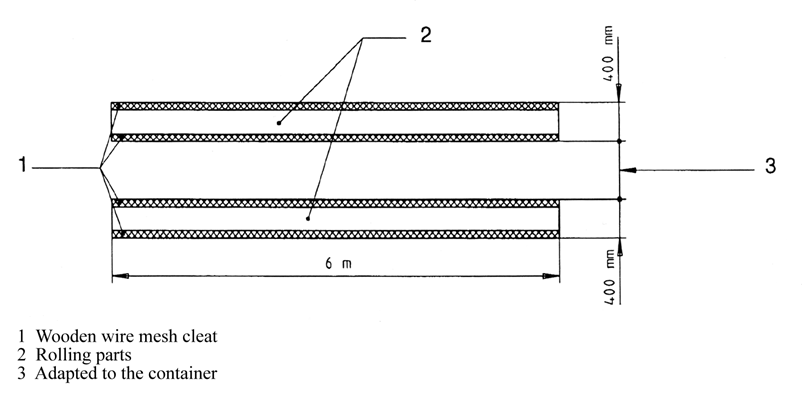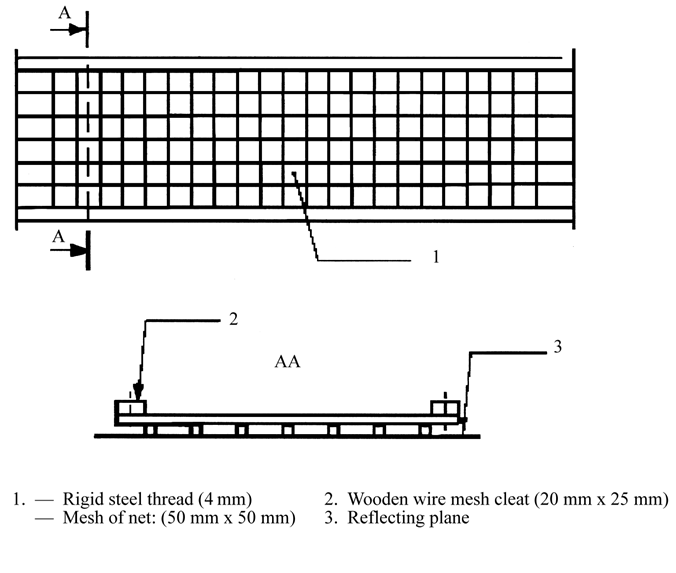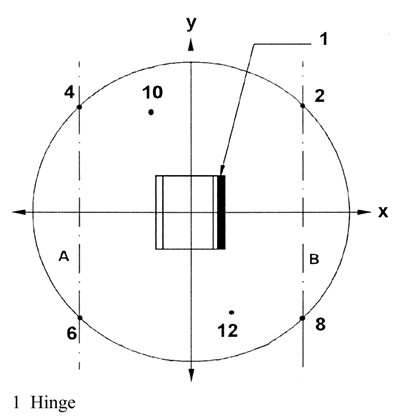Please note that the date you requested in the address for this web page is not an actual date upon which a change occurred to this item of legislation. You are being shown the legislation from , which is the first date before then upon which a change was made.
ANNEX IIIU.K.METHOD OF MEASUREMENT OF AIRBORNE NOISE EMITTED BY EQUIPMENT FOR USE OUTDOORS
PART BNOISE TEST CODES FOR SPECIFIC EQUIPMENT
39.MOBILE WASTE CONTAINERSU.K.
Operating conditions during testU.K.
All the measurements shall be carried out with an empty container
Test No 1: Free shutting down of the lid along the container bodyU.K.
To minimise his influence on the measurements, the operator shall stand at the back side of the container (hinge side). The lid shall be released by its middle, to prevent warping during its fall
The measurement is carried out during the following cycle, repeated 20 times:
initially, the lid is raised vertically
the lid is released forward, if possible without giving an impulse, with the operator at the back of the container, unmoving until the lid is shut
after complete shutting, the lid is raised to its initial position
Note:U.K.
If necessary the operator can move temporarily to raise the lid.U.K.
Test No 2: Complete opening of the lidU.K.
To minimise his influence on the measurements, the operator shall stand at the back side of the container (hinge side) for the four-wheel containers, or on the right side of the container (between microphone position 10 and microphone position 12) for the two-wheel containers. The lid shall be released by its middle or as near as possible to its middle
To prevent any moving of the container, wheels shall be locked during the test. For the two-wheel containers, and to prevent any bounce of the container, the operator can maintain it by placing his hand on the top rim
The measurement is carried out during the following cycle:
initially, the lid is opened horizontally
the lid is released without giving an impulse
after complete opening, and before a possible rebond, the lid is raised to its initial position
Test No 3: Rolling of the container over an artificial irregular trackU.K.
For this test, an artificial test track, simulating irregular ground is used. This test track consists of two parallel strips of steel mesh (6 m long and 400 mm wide), fastened in the reflecting plane approximately every 20 cm. The distance between the two strips is adapted according to the type of container, in order to allow the wheels to roll all over the whole length of the track. The mounting conditions shall ensure a flat surface. If necessary, the track is fastened on the ground with resilient material to avoid emission of parasitic noise
Note:U.K.
Every strip can be composed of several 400 mm wide elements fitted togetherU.K.
An example of adequate track is given in Figures 39.1 and 39.2
The operator is situated at the lid hinge side
The measurement is carried out while the operator draws the container along the artificial track, with a constant speed of approximately 1 m/s, between points A and B (4,24 m distance — see Figure 39.3) when the wheel axle, for a 2-wheel container, or the first wheel axle for a 4-wheel container, reaches point A or point B. This procedure is repeated three times in each direction
During the test, for a 2-wheel container, the angle between the container and the track shall be 45°. For a 4-wheel container, the operator shall ensure an appropriate contact of all the wheels with the track.
Period(s) of observation/determination of resulting sound power level if more than one operating condition is usedU.K.
Test Nos 1 and 2: Free shutting down of the lid along the container body and complete opening of the lidU.K.
If possible, the measurements are carried out simultaneously at the six microphone positions. Otherwise, the sound levels measured at each microphone position will be classified in increasing order and the sound power levels are calculated by associating the values at each microphone position according to their row
The A-weighted single-event sound pressure level is measured for each of the 20 shuttings and the 20 openings of the lid at each measurement point. The sound power levels L WAshutting and L WAopening are calculated from the quadratic mean of the five highest values among those obtained
Test No 3: Rolling the container over an artificial irregular trackU.K.
The period of observation T shall be equal to the duration necessary to cover the distance between point A and point B on the track.
The sound power level L WArolling is equal to the mean of six values differing by less than 2 dB. If this criterion is not fulfilled with six measurements, the cycle is repeated as far as necessary
The resulting sound power level is calculated by:



